应用:
在植物根系吸收水分速度不能满足植物蒸腾需水速度的时候(如土壤水分严重缺乏、蒸腾强度过大、冷冻胁迫或者土壤水势过低),植物导管内水柱中溶解的空气逸出,水分子间的内聚力失效,水柱发生断裂或抽空,在导管内形成气泡或气柱,这些气泡或气柱被称为气穴。该仪器可利用高压将空气或氮气通过植物枝条表面的皮孔和射线组织渗入到导管中,使得植物枝条的导管内产生气泡或气柱,模拟胁迫产生气穴。不同的压力和压力持续时间可以在枝条内部产生不用数量的气穴。通过其他仪器(如植物导水率高压测试仪)测定不同压力和压力持续时间下枝条的导水率,建立植物导水率——气压(气压与产生的气穴量正相关)曲线,可以获知气穴对该植物率的影响,从而评估该样品导水能力的抗胁迫性。
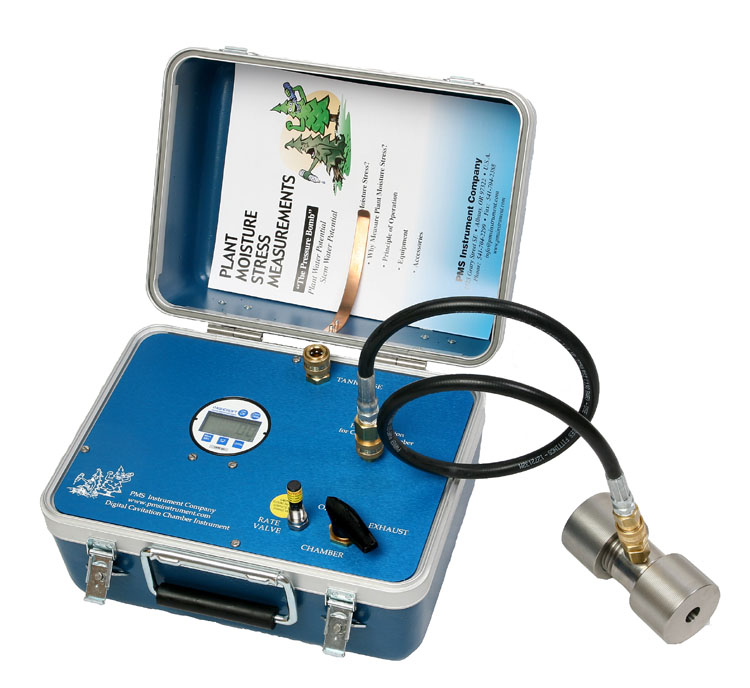
该仪器装置适用于同种植物(木本)不同条件处理(如不同生境)或者不同生理状态下的抗胁迫能力研究,获得植物导水率的脆弱曲线。
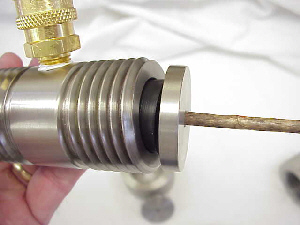
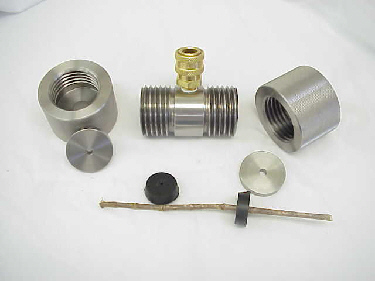
仪器描述:
1.中间的气室大约长3.20英寸。
2.橡胶垫圈套在样品上,并一起深入气室。
3.金属塞挡住垫圈,可以增加密封性。
4.螺丝帽可以增强密封并固定样品。
5.样品必须要达到4.25英寸,保证可以完全通过气室。
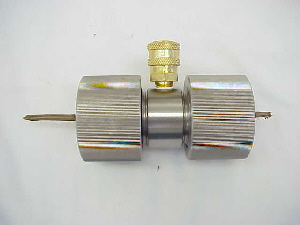
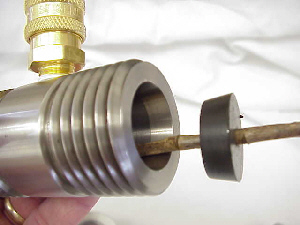
仪器包括:
1. 可以控制到100bar的压力表
2. 3 英尺连接气穴的管子
3. 气穴气室
4. 2个金属堵头尺寸为(5/8", 3/8", 3/16")
5. 每个金属堵头带5个橡胶垫圈尺寸为(自己打口, 1/16", 1/8", 3/16")
6. 6英尺连接仪器到气罐的管子
7. 便携式气瓶(可选)
在导水率测定方面,推荐使用植物导水率高压测试仪。
产地:
美国
下面是两篇关于气穴与导水率关系的文章,用户可以参考并试验自己的样品
参考1 Relationships between Hydraulic Conductance, Xylem Cavitation, and Stomatal Regulation of Transpiration Sperry, JohnThere is increasing evidence that avoidance of critical levels of xylem cavitation caused by dynamic (transpiration-induced) water stress is one major adaptive advantage of stomatal closure. The minimum negative xylem pressure recorded for 37 species strongly correlated with the negative pressure inducing 100% loss of hydraulic conductance in stems from xylem cavitation. The minimum safety margin from complete cavitation ranged from a few tenths of a megapascal in drought-susceptable plants to several megapascals in more drought-tolerant plants. Safety margins were even smaller for root xylem. Small safety margins from cavitation could not be explained by a trade-off between cavitation vulnerability and conducting efficiency.
Although avoidance of complete cavitation is achieved by stomatal closure, partial cavitation and loss of hydraulic conductance appears to be promoted, particularly in the more vulnerable root system. Field studies showed significant cavitation in root xylem of woody plants during drought, and reversal following rain. Stem xylem showed much less dramatic response to drought. Loss of hydraulic conductance in the root system may be the primary hydraulic limitation for gas exchange.
Partial cavitation during drought may be advantageous; particularly in roots where it is most readily replaced after the drought either by refilling embolized conduits, or growth of new roots. Studies with Betula occidentalis have shown that stomata close in response to a loss of hydraulic conductance because they sense the reduction in leaf water status. Thus, loss of hydraulic conductance by cavitation leads to reduced transpiration for the same drop in xylem pressure. As a drought progresses, cavitation superimposed on stomatal regulation moderates the rate of soil water extraction more than stomatal regulation alone. Reduced water use during drought prolongs its availability in soil and may allow more to be extracted by minimizing the drop in soil-to-root hydraulic conductance.
Key words: xylem cavitation, hydraulic conductance, stomatal regulation, water stress, drought tolerance.
Correspondence: John Sperry, Department of Biology, University of Utah, Salt Lake City, UT 84112, USA
参考2 Susceptibility to Xylem Embolism as an Index of Drought Tolerance in Chaparral Shrubs of California (USA) Davis, StephenThere are two genera of chaparral shrubs in California (Arctostaphylos and Ceanothus) that contain species with very different life history characteristics ?sprouters and non-sprouters after wildfire. Non-sprouters were hypothesized to be more tolerant of the first summer drought after wildfire and thus more resistant to water stress-induced embolism of their xylem tissue. This hypothesis was tested by comparing three pairs of co-occurring sprouters and non-sprouters of Ceanothus. In all cases, non-sprouters had significantly greater resistance to water stress-induced embolism than sprouters (differences ranged between 2.5 and 3.7 MPa in water potential were 50% embolism occurred). When vulnerability to xylem embolism was compared among four dominant species of a mixed chaparral stand, susceptibility to water stress-induced embolism varied between ?1 MPa for Ceanothus megacarpus to ?.9 MPa for Malsoma laurina. Adenostoma fasciculatum (?.3 MPa) and A. sparsifolium (?.9 MPa) were intermediate. The increasing order of susceptibility to embolism (C. megacarpus < A. fasciculatum < A. sparsifolium < M. laurina) corresponded to the order in which post-fire seedlings were susceptible to summer drought: C. megacarpus (63% survival), A. fasciculatum (21% survival), A. sparsifolium (8% survival), and M. laurina (1.1% survival). A comparison of the vulnerability of xylem to embolism among 22 species of chaparral shrubs indicated that susceptibility corresponds to minimum seasonal water potentials but is weakly correlated with vessel diameter or area specific conductivity. This is consistent with the hypothesis that susceptibility to water stress-induced embolism is a function of pore size in pit membranes of vessel and tracheid cell walls and not vessel size.
Key words: xylem embolism, drought tolerance, chaparral.
Correspondence: Stephen D. Davis, Natural Science Division, Pepperdine University, Malibu, California 90263 , USA
北京易科泰生态技术有限公司
仪器网(yiqi.com)--仪器行业网络宣传传媒